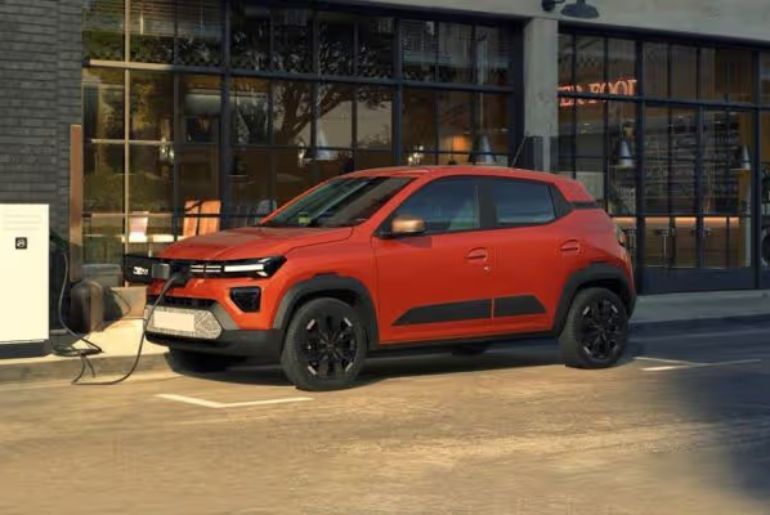The new-generation Duster, the seven-seat Boreal version, the Triber facelift, and the Kwid EV are among the several new models that Renault is developing for the Indian market. The Triber makeover is scheduled to debut this week, and the French automaker is actively working on all four models.
Concurrently, Renault is developing the Kwid EV, its first electric vehicle. The Dacia Spring EV, which is already available for purchase in Europe, will essentially be a rebranded Dacia Kwid EV in India with a new logo and branding. In the recent past, test mules of the Kwid EV have been seen on Indian roads several times.
The Kwid EV has been seen heavily camouflaged in every spy photo taken to date. The most recent spy photos, which are purportedly from Brazil, reveal the Kwid EV in all its splendour for the first time. The pictures show a massive stock of the all-electric Kwid stacked up, probably at a dealership in the South American nation.
According to reports, Renault is preparing to debut the next-generation E-Kwid in the second half of 2025 by storing units in Brazil. According to reports, the corporation imports these cars from its Chinese manufacturing plants.
As anticipated, unless the branding and logo are different, the exterior appears to be identical to its European counterpart. The Kwid EV’s headlamps are neatly incorporated into the front bumper and feature a distinctive Y-shaped LED DRL. With a charging flap positioned in the middle and bearing the Renault symbol, the gloss black front fascia creates contrast. The EV has Y-pattern LED taillights on the back, which are joined by a sleek black strip that runs the length of the car.
The Europe-specific A 10.1-inch infotainment touchscreen, a 7-inch completely digital driver’s display, a height-adjustable steering wheel, and an e-Shift gear lever are just a few of the many features that the Dacia Spring is equipped with. It has a Vehicle-to-Load (V2L) feature and supports wireless smartphone mirroring for Apple CarPlay and Android Auto.
There are two USB charging connections, a roomy 308-litre boot, and an optional 35-litre front trunk (frunk) for added convenience. We anticipate that the India-spec Kwid EV will have the same features.
A 26.8 kWh battery will power the Kwid EV, which is based on the Dacia Spring EV. It is anticipated to be available in two versions, the Electric 45 and the Electric 65, the same as the global model. The Electric 45 version produces 125 Nm of torque starting at 2,521 rpm and 44 bhp between 2,521 and 8,200 rpm. Dacia claims that this version has a top speed of 78 km/h and can accelerate from 0 to 100 km/h in 19.1 seconds.
The more potent Electric 65 version generates 113 Nm of torque between 500 and 4,057 rpm and 64 bhp between 4,057 and 6,000 rpm. It keeps its top speed of 78 km/h and goes from 0 to 100 km/h in 13.7 seconds. According to Renault, both models have a 225-kilometre driving range. The Electric 65 charges from 20% to 80% in just 45 minutes, while the Electric 45 recharges from 20% to 100% in less than five hours.

